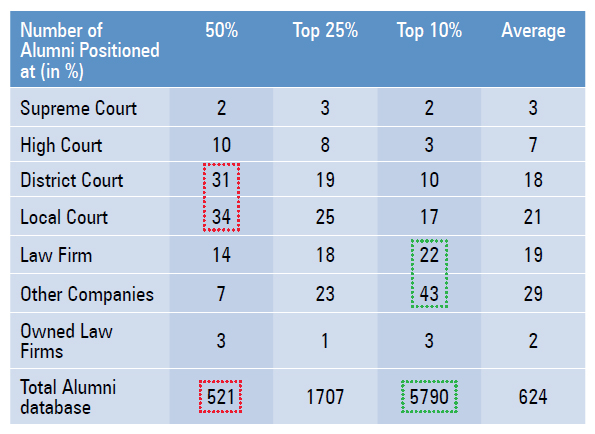CLAT and their own admission test are the two most used basis for admission into law colleges. CLAT is more popular in West and South whereas North prefers more of its own tests for admissions


We need good lawyers and good judges to interpret the law and provide legal assistance to the citizens. Legal education refers to the education of lawyers before they start practicing in the court of law.
Infrastructure in colleges have been improved to a high extent specifically new/private colleges if compared with the old colleges.
Nowadays, students are getting more exposure in terms of internships, courts visits etc.
Students are updated with the current scenario. They are more hi-tech and advanced.
Students’ Interaction with Alumni / Lawyers /Judges is being given more priority.
As there are few attributes which have improved in the Law education system since a decade, there are some in which lots of improvements are required.
Faculty doesn’t excel in the specific subjects that they teach. No specialization on law subjects.
Fee structure is very high if compared to teaching method in law.
Teachers don’t excel in the specific subjects that they teach. They just take lectures and complete their classes.
Communication has been the biggest problem in the law education for students.
The current state of Law education in India is characterized by a high dropout rate, stagnant syllabus and lack of qualified faculty
Law education is India seems to be languishing with high dropout rate, infrequent updating of syllabus, less skilled faculty and higher faculty to student ratio
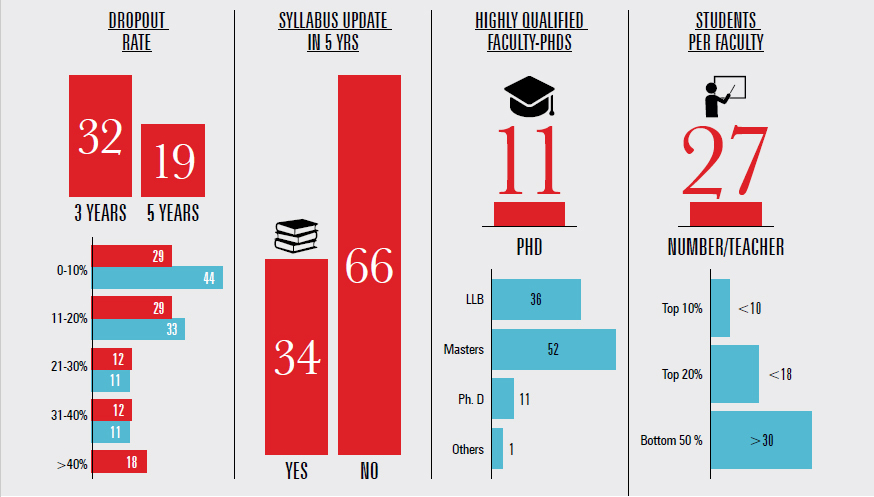
| Professionalism | Low Practical Knowledge | Money Focused | Hi-Tech |
|---|---|---|---|
| Professional ethics are missing in students. They are not serious related to their responsibilities. | Due to low practical activities at college level, they are not trained enough to face the court. | Students are more inclined towards fame and money. Most of the students want to become corporate lawyers. | In law education, library plays a vital role but now a days students are using other sources more to learn like internet, e-books etc. They do not use books to read and mark points. |
Based on practices adopted by different colleges we classified them as basic, value added and exclusive. Most Law Colleges are still focused on basic teaching practices. Virtual Classroom teachings is the only value added practices adopted by many.
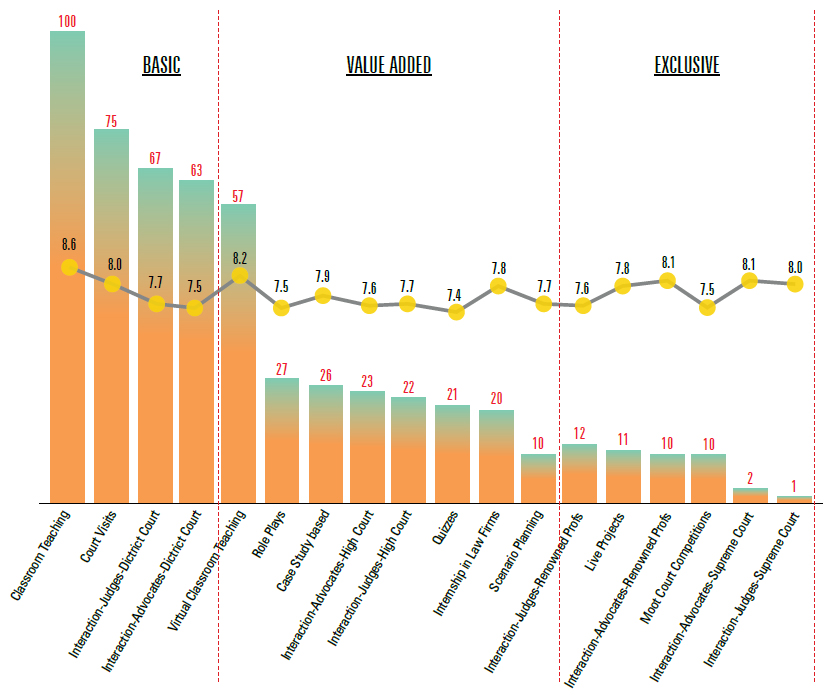
There is a huge gap between promises made by law colleges and the actual results delivered
There is a large gap between the claimed and actual ground reality at two levels i.e. gap at actual happening and gap in frequency. Gap in actual happening is a bigger concern than frequency. There are certain practices that have a much higher claim than others
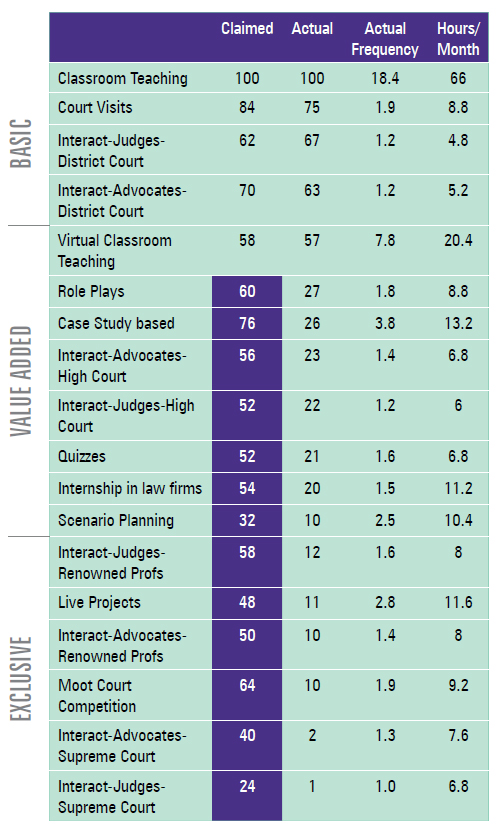
Colleges in Central Zone show higher consistency in using the basic teaching practices. North is the weakest zone in this respect. East is showing much higher instances of value added elements.
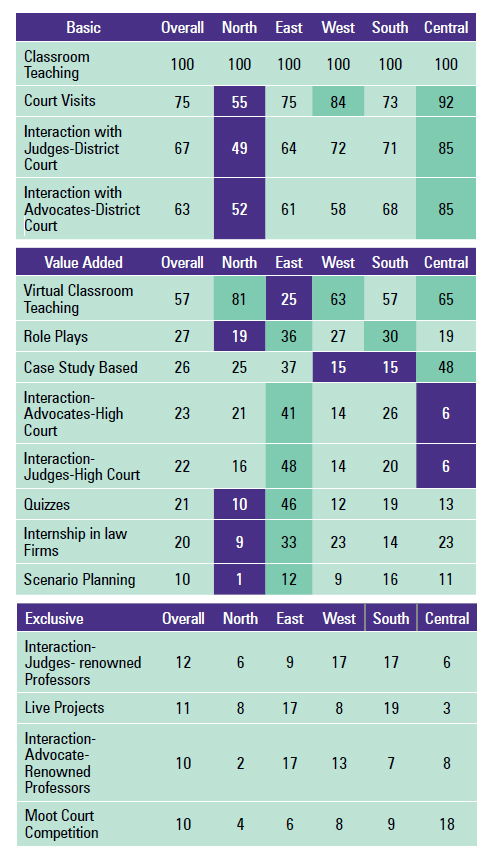
There is a large gap between claimed and actual ground reality at two levels i.e. gap at actual happening and gap in frequency. Gap in actual happening is a bigger concern than frequency. There are certain practices that have a much higher claim than others

A cross-analysis of teaching practices revealed that there are mainly three groups of practices adopted by colleges
Group 1: consists of mainly basic teaching practices
Group 2: consists of more prevalent value added practices
Group 3: consists of less prevalent value added practices
| Group 1: Most of the colleges will be doing these practices. | Group 2: Average Colleges will be doing these practices. | Group 3: Only the good colleges will be doing these practices. |
|---|---|---|
| Virtual Classroom Teaching | Role Plays | Internship with law firms |
| Court Visits | Case Study based | Case Study based |
| Interaction with Judges-District Court | Interaction with Advocates-High Court | |
| Interaction with Advocates-District Court | Interaction with Judges-High Court |
There are mainly three groups of practices adopted by institutions together. Group 1 consists of mainly basic teaching elements whereas Group 2 and 3 are consist of value added practices.
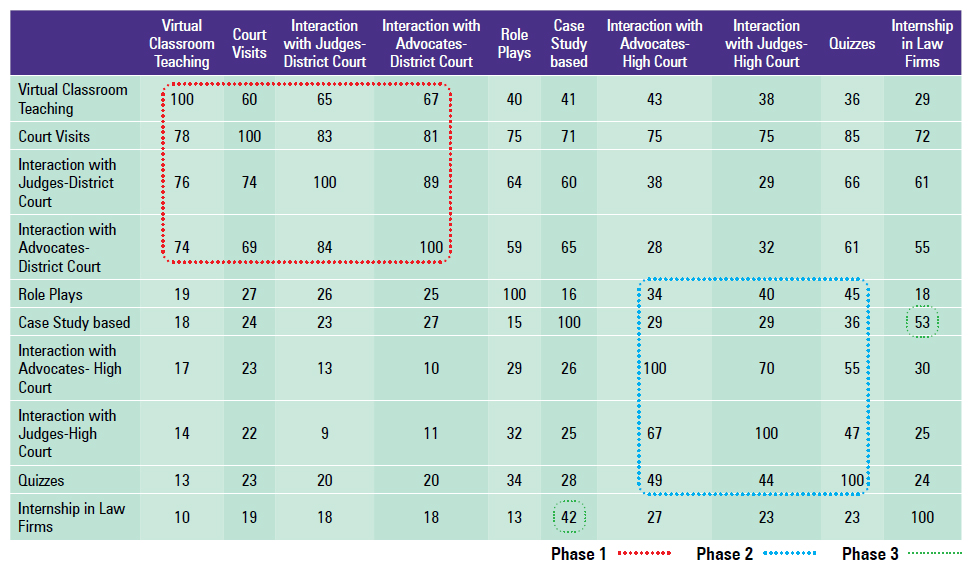
Alumni, Seminars/Panel discussions and workshops are conducted by majority of the law colleges for enhancing the exposure and engagement of the students.
In spite of high incidence, the frequency remains low for many of these activities thus minimizing the positive impact on student’s overall development and learning.
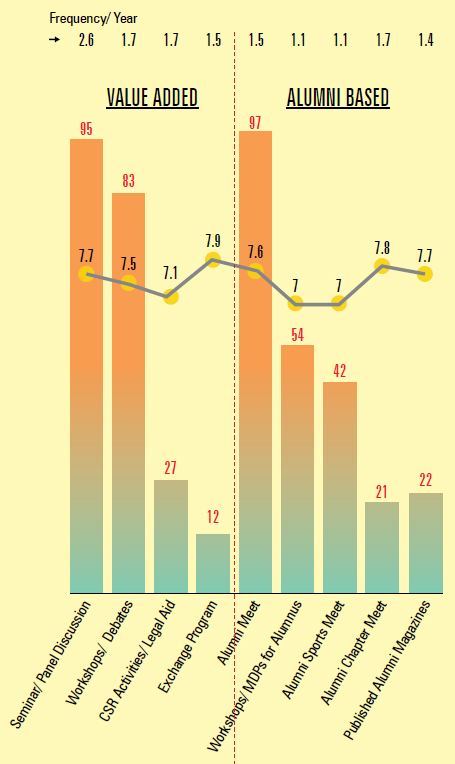
Intellectual capital improvements for law colleges is given very little focus by majority of colleges as there is a very less participation and investments done on research related aspects.

Majority of the colleges have their alumni limited to District Court and local courts with very less of them making it to high court or supreme court. It is also observed that corporate firms and law firms take students only from top colleges.
